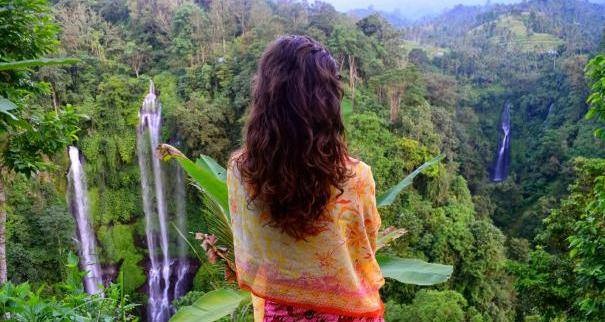When one thinks of Bali, visions of palm trees, beaches, and lush landscapes often flood the mind. Yet, nestled in the heart of this tropical paradise lies an extraordinary experience that goes beyond the typical tourist path: the breathtaking Bali rice terraces. As someone who’s explored these emerald-green wonders, I’m eager to share my journey into the world of Bali rice terraces eco tourism, and how you can immerse yourself in this unique adventure.
The Allure of the Rice Terraces
During my first visit to Bali, I was instantly captivated by the famous Tegalalang Rice Terrace. The moment I stepped into this vast expanse of layered, verdant fields, it felt like I had walked into a living postcard. Each step along the narrow paths connecting the terraces revealed a sublime interplay of shades of green, accented by the golden hues of ripening rice.
The sight of local farmers tending to their crops, skillfully navigating the field’s undulating surfaces, was both mesmerizing and humbling. It made me reflect on the centuries-old traditions of rice cultivation and the importance of sustainable practices in preserving this ecological marvel.
Eco Tourism: A Path Less Traveled
The concept of eco tourism is about making connections—not just with the environment but also with the local culture and communities. Eco tourism in Bali, especially in the rice terraces, allows travelers to engage in responsible travel that positively impacts both the environment and local culture.
By choosing to visit these terraces, you have the chance to learn about traditional farming methods while enjoying the stunning scenery. Local guides often share stories about their ancestors and the significance of rice in Balinese culture. I remember sitting down with a farmer, who offered me a handful of freshly harvested rice, and telling me how each grain is woven into the fabric of their daily rituals. That’s not a souvenir you can buy; it’s a memory you can carry forever.
Practical Tips for Your Journey
1. Choose Eco-Friendly Accommodations: Before heading out, look for lodges or homestays that prioritize sustainability. Many places use solar power, recycle waste, and promote local food sources. I stayed at a cozy eco-lodge near Ubud, where my morning coffee was sourced directly from local farmers, and my breakfast was freshly prepared from ingredients grown right there.
2. Engage with Local Guides: As you wander through the rice fields, hire a local guide. They can provide insights that you wouldn’t find in a guidebook. My guide, a cheerful woman named Nyoman, not only shared her extensive knowledge about rice cultivation but also led me on a beautiful hike through lesser-known terraces, away from the typical tourist crowds.
3. Experience the Local Culture: Schedule your visit during one of the rice festivals if you can. Joining in on the celebration, which includes traditional dance, music, and rituals honoring the rice harvest, is an experience you won’t want to miss. I found myself dancing alongside the locals, feeling a profound sense of community and joy.
4. Respect the Land: When visiting the rice terraces, it’s vital to be a responsible traveler. Stick to the paths to avoid damaging crops, and always ask for permission before taking photos of people. This respect goes a long way in fostering positive interactions. I made a point to acknowledge the farmers and their work, which opened doors to heartfelt conversations.
5. Capture the Moment Mindfully: While it’s tempting to take countless photos, try to put your camera down and soak in the beauty around you. One of the most memorable moments for me was just leaning against a bamboo railing, watching as the golden sunset bathed the terraces in warm light. It was a manageable reminder that sometimes, the best memories are not documented but rather experienced fully.
Sustainable Activities to Try
– Rice Planting: Participate in a rice planting activity and learn firsthand how to cultivate rice. Typically, local farms welcome visitors to help plant seedlings in the fields. Embrace the mud and enjoy this labor of love that has been practiced for generations.
– Cooking Classes: Consider taking a cooking class that highlights local ingredients, many of which are sourced from the very rice fields you’ll be visiting. I learned to make Nasi Goreng using organic vegetables and spices laid out in front of me, and it was one of the most delicious meals I’ve ever prepared.
– Nature Walks and Birdwatching: The rice terraces are also home to varied wildlife, including beautiful birds. Early morning walks offer a chance to spot these creatures and enjoy the tranquility of nature before the day warms up.
Conclusion
Visiting the Bali rice terraces is not just about witnessing the beauty of nature; it’s about connecting with the culture and environment in a meaningful way. Eco tourism in Bali invites travelers to appreciate the delicate balance of farming traditions, community life, and the stunning landscapes that envelop them.As you plan your adventure, remember to embrace the unique experiences, tread lightly, and be a part of this remarkable journey into an eco-conscious paradise. My time at the rice terraces enriched my understanding of sustainability, culture, and community—not just in Bali, but in countless places around the world. I hope it does the same for you!






